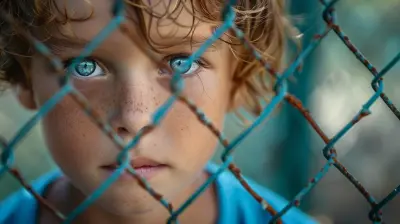Managing the Emotional Impact of Divorce on Blended Family Dynamics
31 July 2025
Let’s face it—divorce isn’t just the end of a marriage; it’s the beginning of a whole new chapter, and sometimes, that chapter includes a cast of new characters who are suddenly family. We’re talking about blended families. Add kids, former spouses, new partners, and emotions running at full throttle, and you’ve got yourself a real-life emotional Jenga tower.
If you’re navigating this journey, you already know it’s not easy. But it’s not impossible either. The key? Managing the emotional twists and turns that come up when two families become one, especially after a divorce. Let’s unpack this together.
What Is a Blended Family?
First off, let’s clear the air.A blended family (or stepfamily) is when one or both partners bring kids from previous relationships into a new marriage or partnership. Sounds simple, right? But in reality, it’s anything but straightforward.
There are layers upon layers of emotions, unmet expectations, and loyalty binds—not just for adults, but especially for the children involved. The emotional rollercoaster is real.
The Emotional Fallout of Divorce
Divorce is messy. Even in the most “amicable” of splits, there's emotional residue. Guilt, anger, sadness, relief, regret—it’s a cocktail of emotions that doesn’t always go down smoothly.For parents, there’s the added pressure of making sure the kids are okay. For kids, there's confusion, fear, and a deep sense of loss. And just when they start to adjust to a new reality, BOOM—a new stepparent or stepsibling enters the picture. Now what?
The Unique Challenges of Blended Families Post-Divorce
Let’s break down why managing a blended family after divorce can feel like juggling flaming swords.1. Conflicting Loyalties
Kids may feel loyal to their biological parent and see the stepparent as an outsider. Loving a stepparent might feel like betraying their "real" mom or dad. Can you blame them?2. Different Parenting Styles
Ever tried to mix oil and water? That's what it feels like when two parents with distinct parenting philosophies try to raise kids under one roof. Add in ex-spouses who also have a say, and—yep—it gets complicated fast.3. Resentment and Grief
Kids might still be grieving the original family unit. Adults might harbor resentment from past relationships. Toss all those unresolved feelings into one household and expect some fireworks.4. Unrealistic Expectations
Let’s be real—no one becomes the "Brady Bunch" overnight. Expecting instant harmony is a recipe for disappointment. Relationships take time, especially the complex web woven in blended families.
Strategies for Managing the Emotional Impact
The stress is real, but so is the hope. With the right tools and mindset, you can help your family not just survive—but thrive.1. Acknowledge the Emotions (Yes, All of Them)
First rule: Don’t brush feelings under the rug. Whether it's your own guilt or your child’s anger, every emotion deserves a seat at the table.Sit down and talk. Ask your kids how they're feeling. Share your own struggles (in an age-appropriate way). You don’t need to fix everything—just being a safe space goes a long way.
> Think of emotions like a soda can. If you shake it up and never release the pressure, it’s going to explode.
2. Patience, Patience, and More Patience
Blending a family is a long game. Don’t expect overnight bonding. The stepparent-stepchild relationship, in particular, may need years to truly blossom.Give everyone time to adjust. And remind yourself—progress is still progress, even if it's slow.
3. Create New Traditions
Sometimes, the best way to move forward is to create something brand new. Start small. A weekly game night. Sunday pancakes. Holiday rituals that are just yours.> Think of it like planting a garden. You’re building roots for a shared future, even if right now it’s just a few seeds in the soil.
Creating shared experiences builds trust and connection, little by little.
4. Respect Every Relationship
Your child may still have a strong bond with their other parent—and that’s okay. Support that relationship, even if it stings a little.Show that you’re not trying to replace anyone. Instead, you’re adding love—not subtracting it.
And as a stepparent, remind yourself: respect and connection come before authority. Let the relationship grow before jumping into discipline roles.
5. Keep Communication Open (Even When It’s Tough)
Say it louder for the people in the back—communication is everything.Set regular check-ins with your partner. Keep the lines open with your ex, if possible, for co-parenting decisions. And most importantly, ensure the kids feel heard.
Use “I” statements, compassion, and, yes, a whole lot of deep breaths. You’re working with differing past experiences, expectations, and feelings. Clear, honest communication keeps the boat from tipping.
6. Don’t Compare
Every blended family is different. Maybe your friend’s kids embraced their stepparent instantly. Maybe someone else’s stepparent became “Mom” or “Dad” in months.That’s them. You’ve got your own family rhythm.
Focus on your own dynamic. Celebrate the small wins, and give yourself grace through the tough patches.
Helping Children Navigate the Transition
If you think you’re overwhelmed—imagine being a kid whose world just got turned upside down.Offer Reassurance
Kids need to know that divorce wasn’t their fault and that they are loved—no matter what. Reassurance should be your parenting mantra.> Say it often: "You’re not to blame. We love you. That will never change.”
Encourage Expression
Whether it’s talking, drawing, or journaling—kids need an outlet. Help them name their feelings, especially the hard ones.If they’re not opening up to you, consider a counselor or therapist who specializes in divorce and blended families. There’s no shame in getting support.
Maintain Routines
Routine = stability. Keep bedtimes, school schedules, and favorite family activities as consistent as possible. When everything else feels uncertain, routines are like a warm hug.Allow Them to Set Boundaries
Don’t force relationships. If your child isn’t ready to call your new spouse “Mom” or “Dad,” that’s okay. Let them move at their own pace. Trust grows when it’s not pressured.Self-Care for Parents Going Through It
You can’t pour from an empty cup, right?Take care of yourself. This isn’t selfish—it’s survival.
- Talk to a friend or therapist.
- Carve out time for things you enjoy.
- Get enough sleep (seriously).
- Move your body, even if it’s just a walk around the block.
You’re human. And this is hard. Give yourself the same empathy you’re trying to give everyone else.
When to Seek Professional Help
Sometimes, even our best efforts aren't enough—and that’s okay. It doesn’t mean you’ve failed. It means you’re human.If:
- Your child’s behavior has drastically changed,
- There’s constant conflict in the household,
- You or your partner are struggling with depression or anxiety,
It might be time to bring in a family therapist or counselor. There are professionals who specialize in helping blended families find their balance.
Remember: asking for help isn’t a sign of weakness—it’s a power move.
Final Thoughts: Progress Over Perfection
Let’s be honest—managing the emotional impact of divorce on blended family dynamics isn’t about getting it “right” all the time. It’s about showing up, doing your best, and learning as you go.There will be missteps. There will be tears. But there will also be laughter, growth, and moments that remind you why you’re doing this in the first place.
Blending a family is like making a quilt from a bunch of different fabrics. It might not look perfect at first, but over time, it becomes a beautiful, unique creation. One that tells a story of strength, resilience, and love.
So give yourself a pat on the back. You’re doing something incredibly brave—and incredibly important.
all images in this post were generated using AI tools
Category:
Blended FamiliesAuthor:

Karen Hurst
Discussion
rate this article
2 comments
Maxwell McGeehan
Such an important topic! Curious about strategies for fostering harmony in blended families.
November 17, 2025 at 4:37 PM

Karen Hurst
Thank you for your interest! Strategies for fostering harmony include open communication, establishing clear family roles, and prioritizing quality time together.
Edward McBride
Divorce: the ultimate family remix! Just remember, every track needs a little practice to hit the right notes. Sprinkle in patience, humor, and snacks for the best blend!" 🍪🎶
August 3, 2025 at 5:03 AM

Karen Hurst
Absolutely! Humor and patience are key ingredients in navigating blended family dynamics after divorce. A little practice can make all the difference! 🍪🎶


